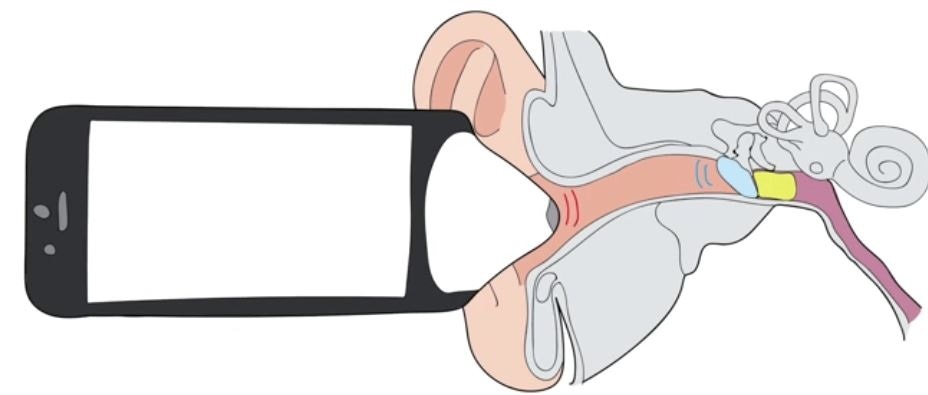
First smartphone app to detect childhood ear infection
Researchers at the University of Washington have created a smartphone app that can detect ear infections in children, a development that could lead to a new screening tool for use at home or in clinical settings.

According to the National Institutes of Health, ear infections are the most common reason for parents taking their child to see a pediatrician.
The problem arises when fluid accumulates in the middle ear behind the ear drum and becomes infected. This build up of fluid can cause pain and make it difficult for a child to hear, which can be particularly problematic when they are trying to learn to talk.
Ear infection can be difficult to diagnose, since symptoms may not be present or may be vague, with a child pulling on their ears or developing a fever, for example. Furthermore, young children may be unable to describe where the pain is located.
Once an ear infection has been diagnosed, it can easily be treated and any fluid that persists can be monitored or drained to relieve pain and/or hearing loss. Being able to quickly screen children at home could help parents decide whether a visit to the doctor is necessary.
As reported in the journal Science Translational Medicine, the new smartphone app can detect fluid accumulation using just a small paper funnel and the phone’s microphone and speaker.
"A key advantage of our technology is that it does not require any additional hardware other than a piece of paper and a software app running on the smartphone," says Gollakota.
The phone delivers soft audible chirping sounds into the ear through the funnel and depending on how the sound waves change as they are bounced off the eardrum and reflected back, the app can determine whether fluid has accumulated with 85% accuracy.
"Depending on how much liquid is in it, you get different sounds. Using machine learning on these sounds, we can detect the presence of liquid," says first author Justin Chan.
This 85% probability of detection is comparable with that achieved with current specialized methods that doctors use to detect middle ear fluid.
To create the device, Chan and team trained an algorithm to detect the signal changes by testing 53 children aged 18 months to 17 years. Around half of the children were due to undergo surgery for ear tube placement and the other half were due to undergo surgeries for problems unrelated to ears.
"When we put in ear tubes, we make an incision into the eardrum and drain any fluid present. That's the best way to tell if there is fluid behind the eardrum. So these surgeries created the ideal setting for this study," explains co-first author Sharat Raju.
After the algorithm correctly identified the likelihood of fluid 85% of the time, the team tested it on 15 ears of younger children aged between nine and 18 months. The system correctly identified all five ears that did have fluid and nine of the 10 ears that did not have fluid.
The researchers then trained parents to use the technology at home to screen their own children.
Of 25 ears tested, both doctors and parents correctly identified the six ears that did have fluid and also agreed on 18 of the 19 ears that did not have fluid.
Raju says fluid behind the eardrum is so common in children that there is a direct need for an accessible and accurate screening tool that can be used at home or in clinical settings:
"If parents could use a piece of hardware they already have to do a quick physical exam that can say 'Your child most likely doesn't have ear fluid' or 'Your child likely has ear fluid, you should make an appointment with your pediatrician,' that would be huge," he concludes.

































No hay comentarios:
Publicar un comentario